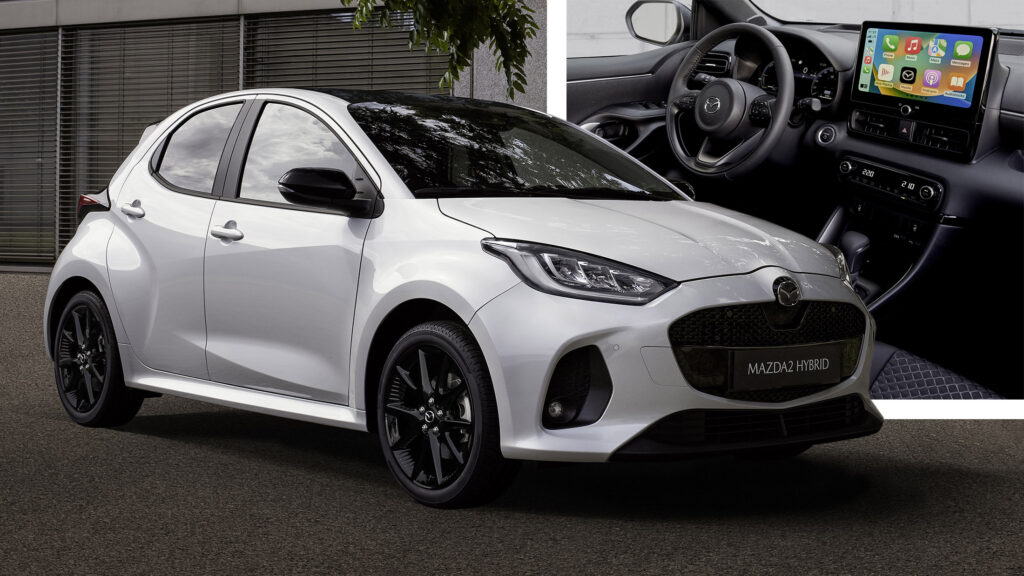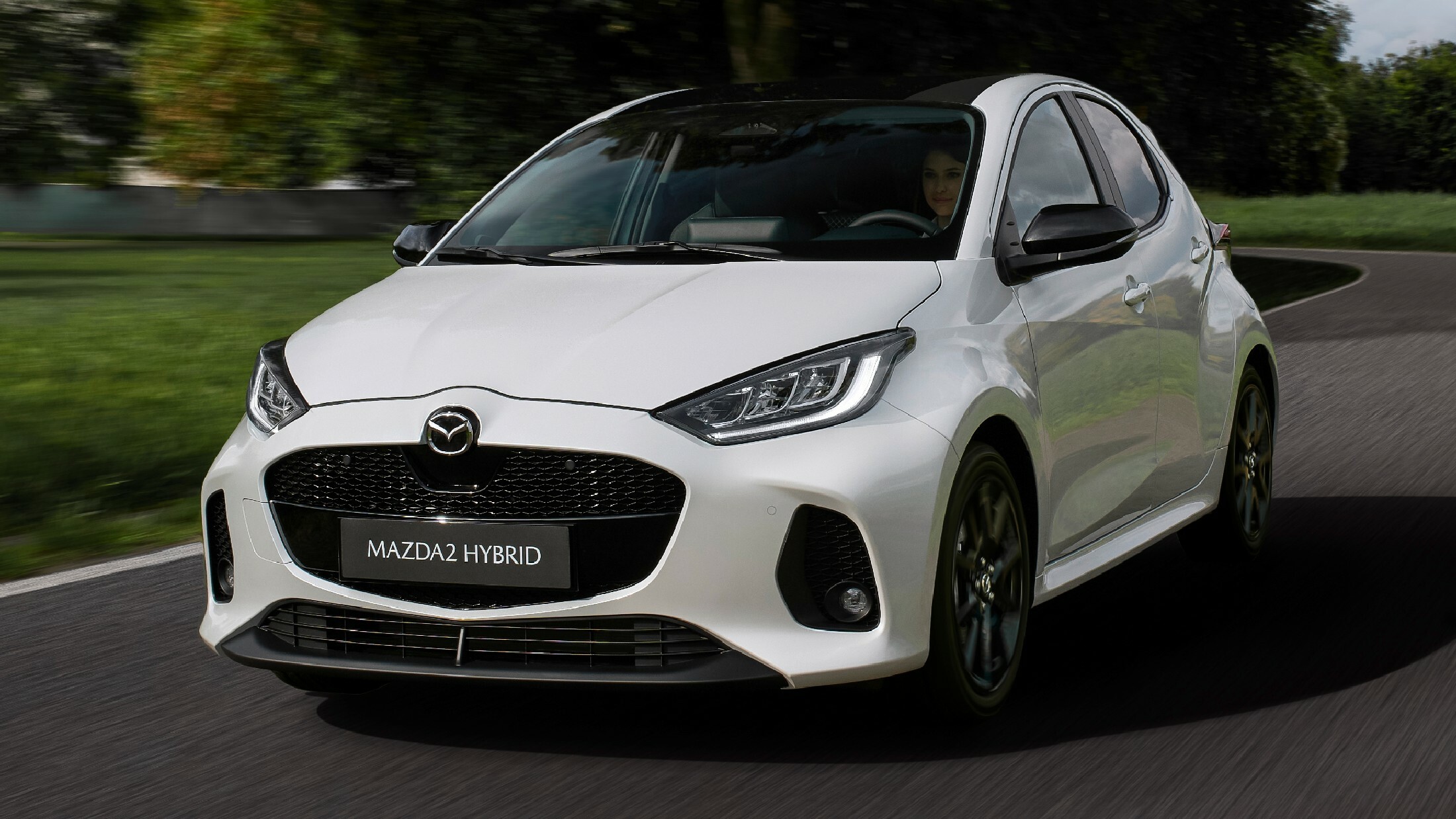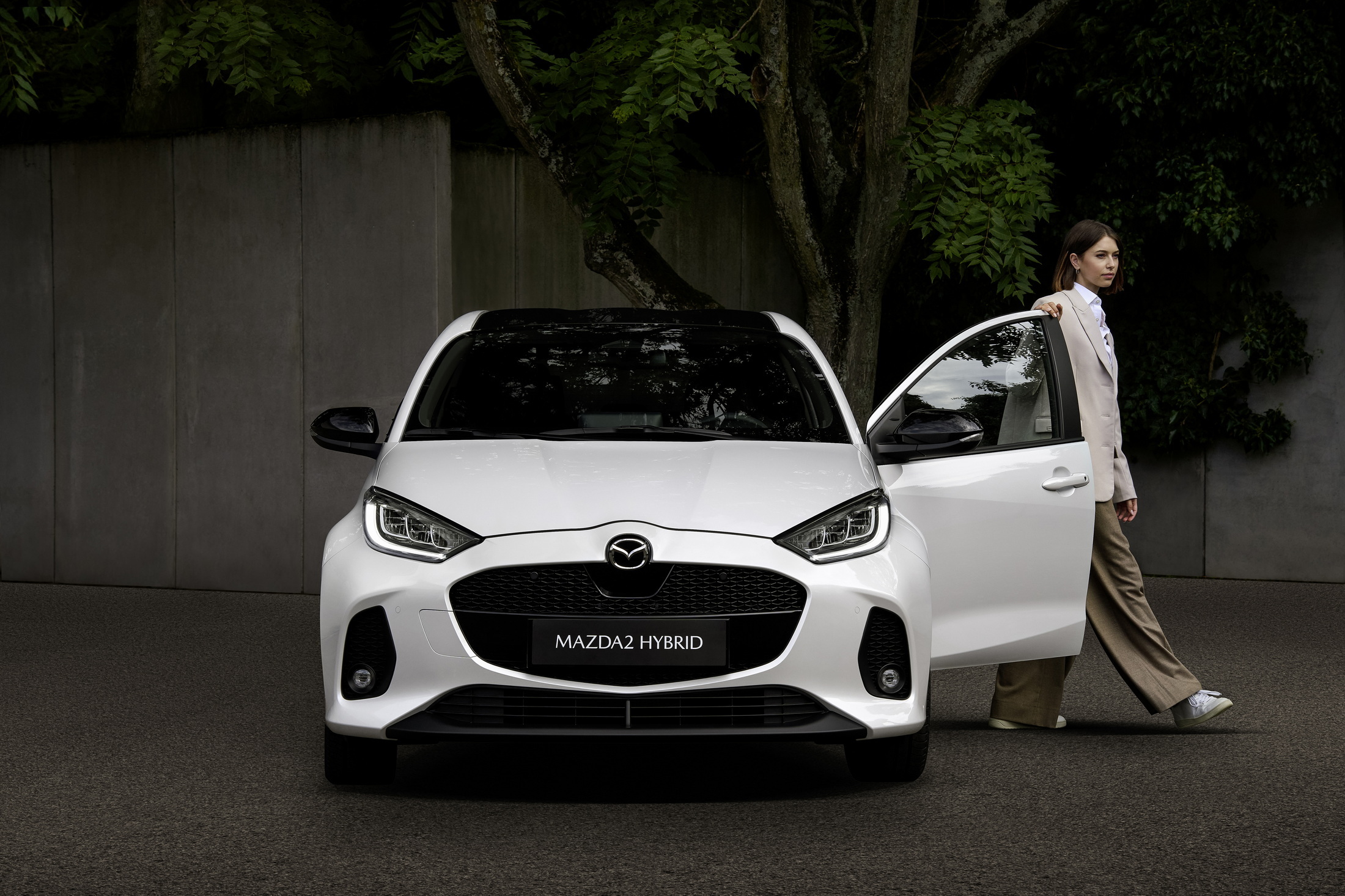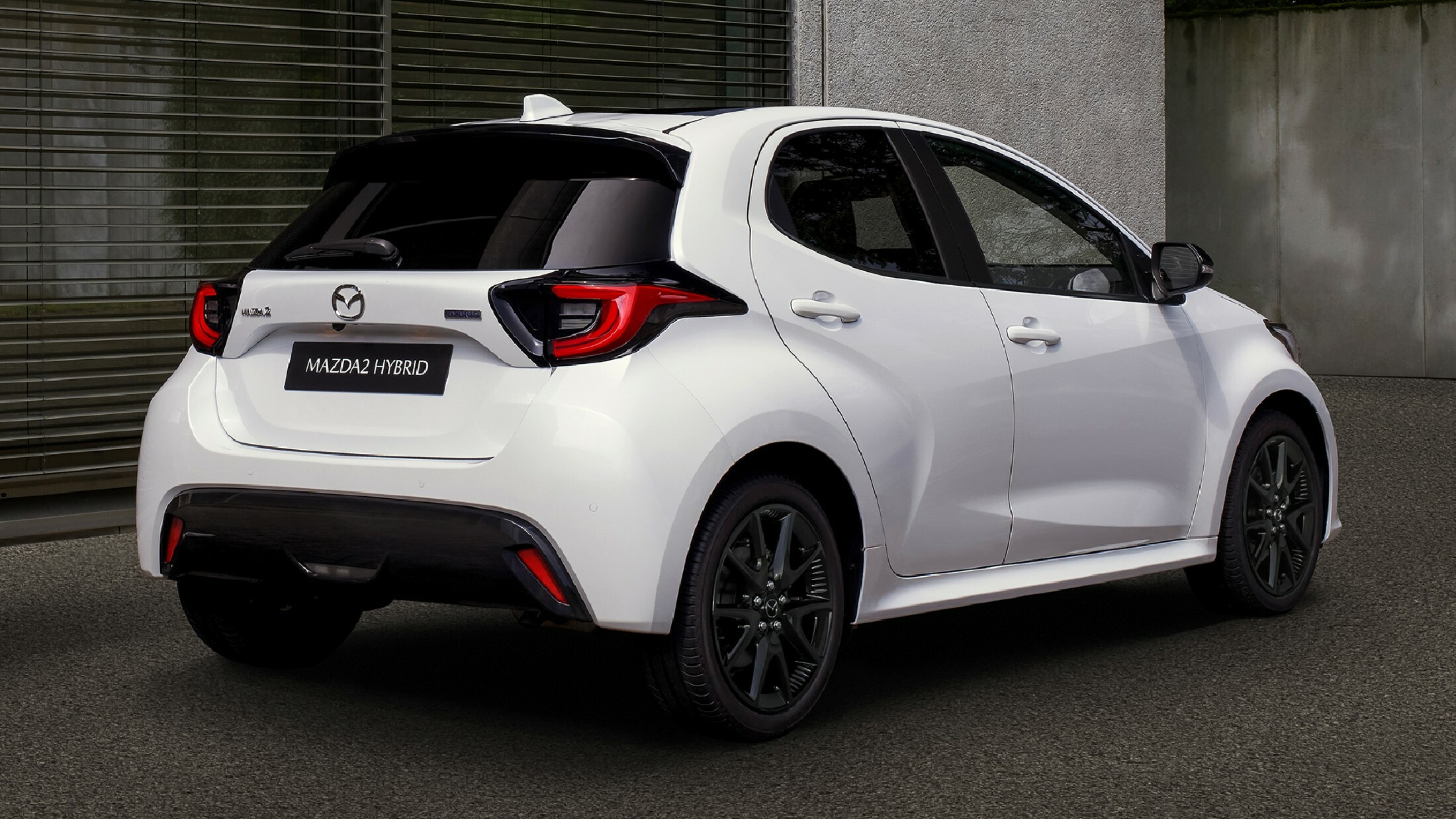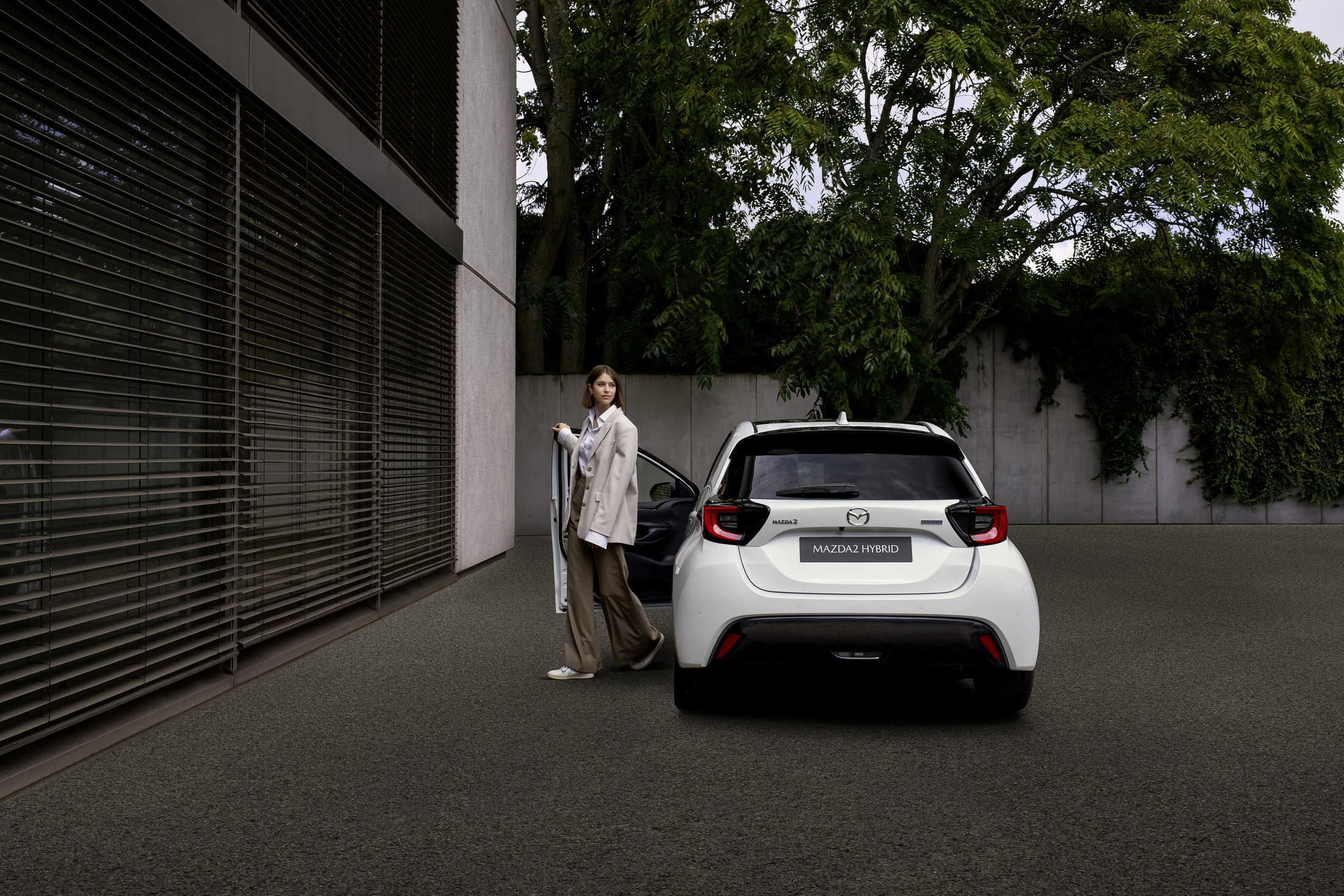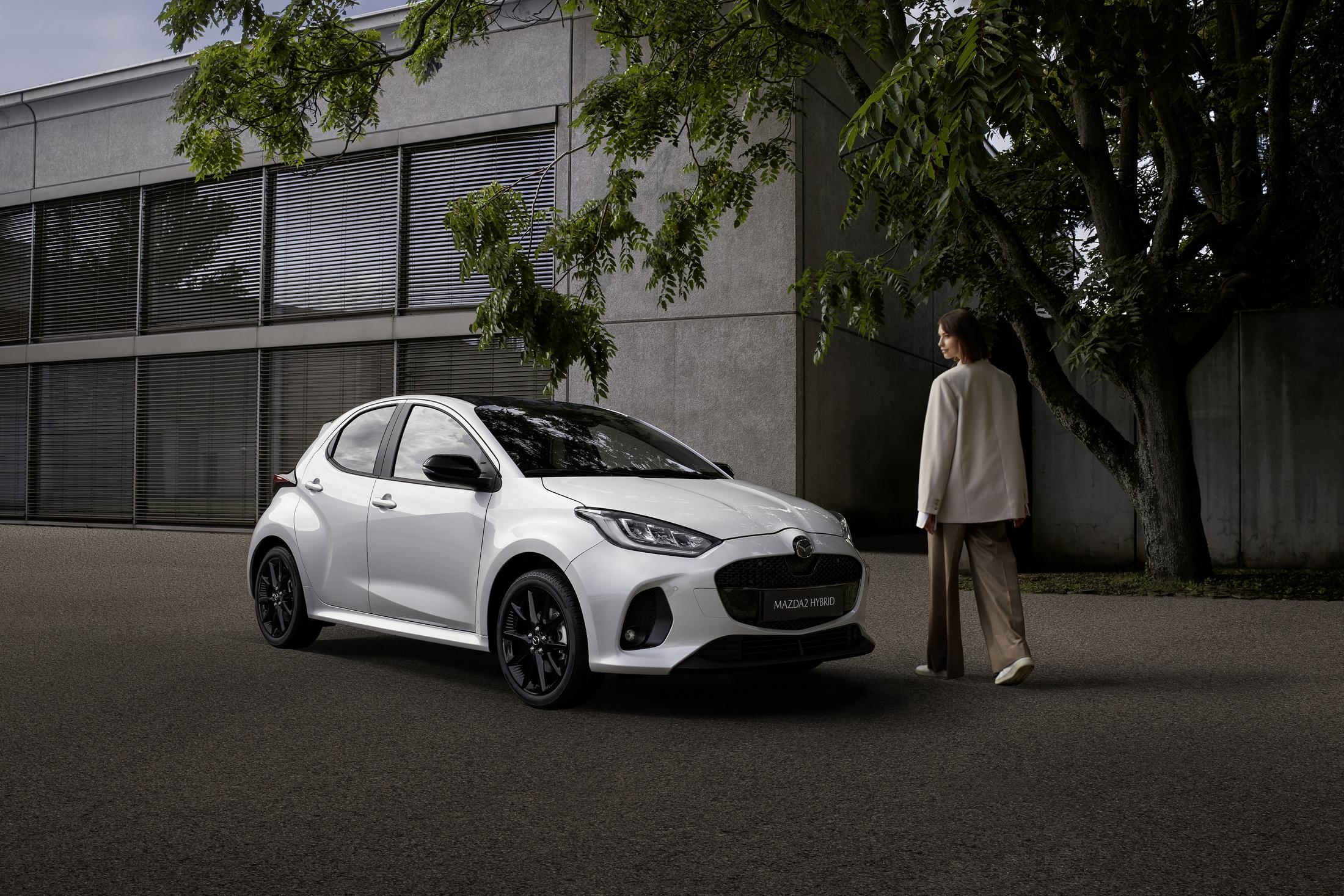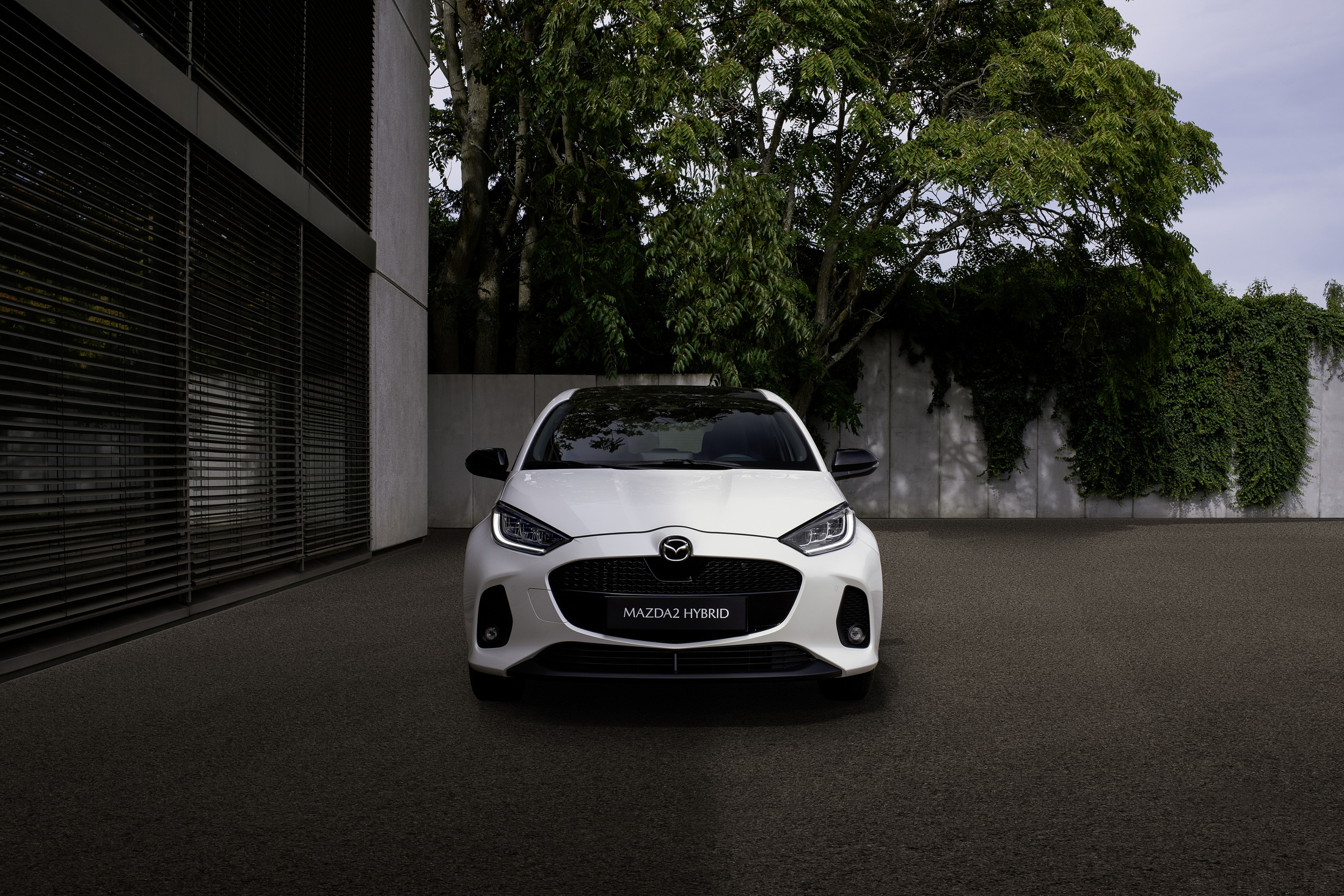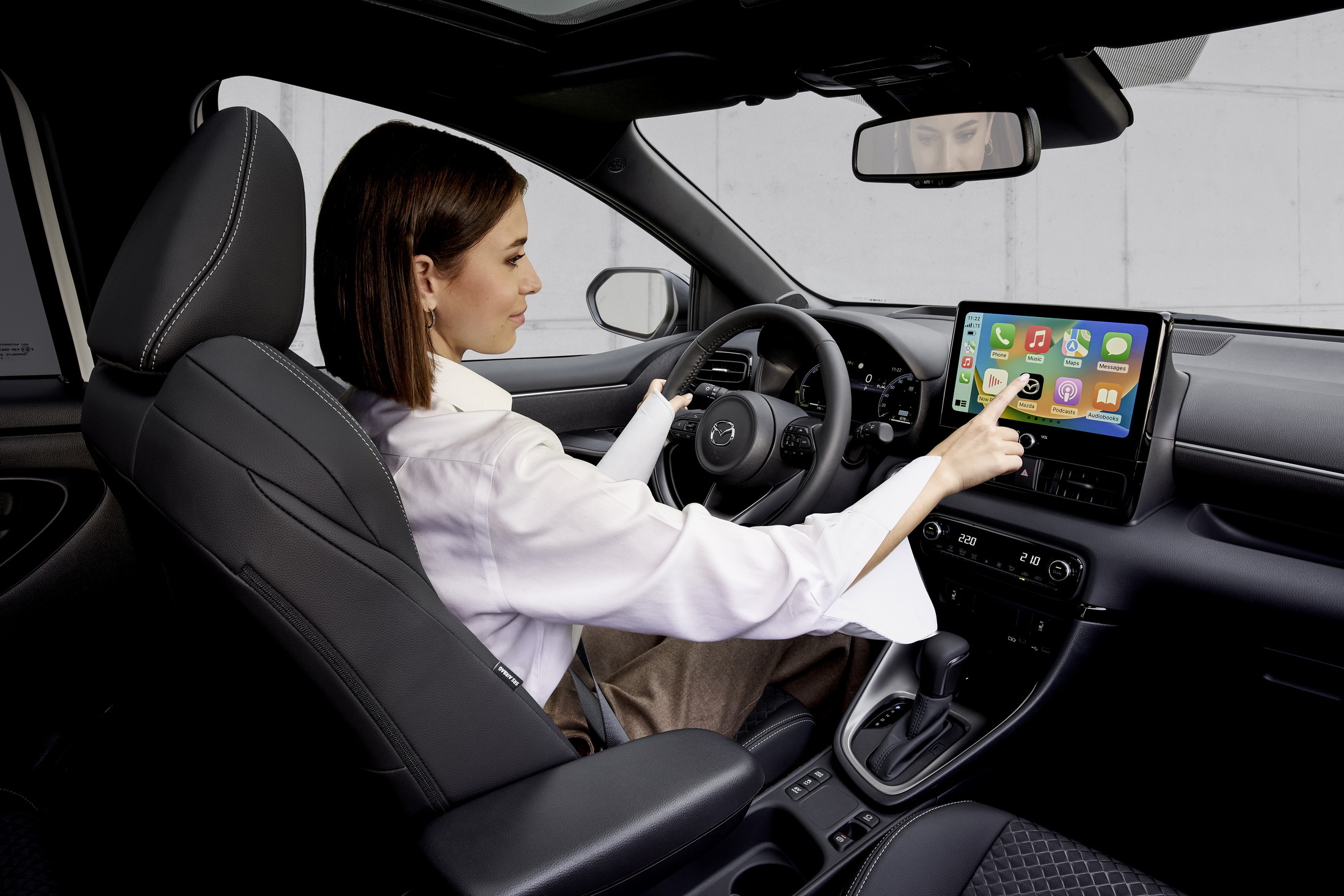It was almost two years ago when Mazda practiced its rebadging skills with the EU-spec Mazda2 Hybrid which was an identical twin to the Toyota Yaris. In a quest to differentiate the siblings so that people have an actual reason to choose one over the other, Mazda updated the supermini with a redesigned exterior, while giving it a few tech upgrades.
The debut of the facelifted Mazda2 Hybrid for Europe comes a few days after the totally unrelated and mildly updated Mazda2 was introduced in Japan.
More: Mazda2 And CX-3 Updated With Fresh 8.8-Inch Infotainment And New Trim Options In Japan
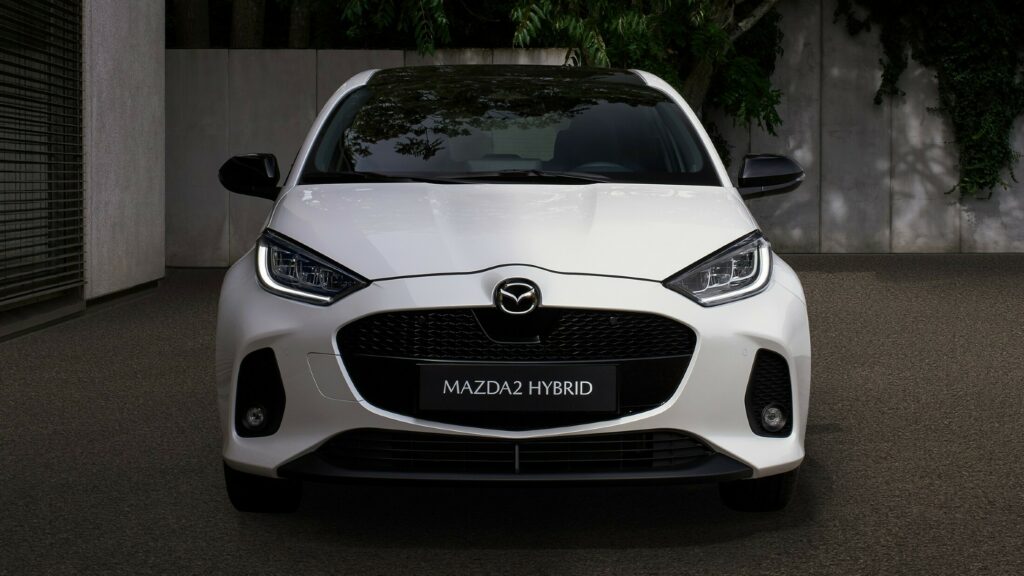
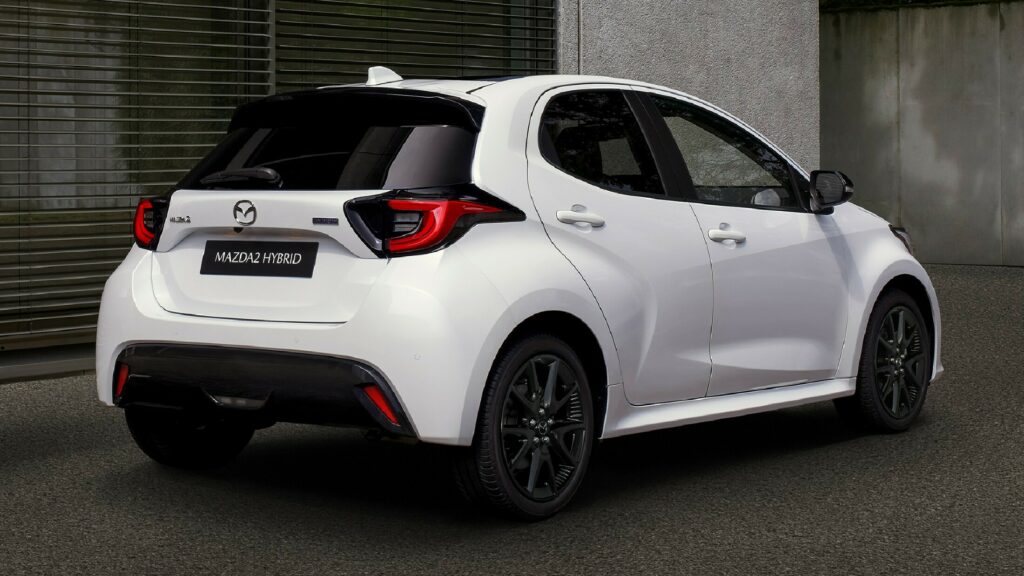
The guys in Mazda’s European Design Studio tried their best to alter the appearance of the Toyota-engineered model. While the doors, fenders, lighting units, bonnet, roof, and greenhouse, are still sourced from the Toyota Yaris, the Mazda2 Hybrid now gains a unique front bumper and tailgate garnish. The new grille and intakes give a Mazda feeling to the exterior design, making us wonder why the company didn’t do that from the start. The body-colored tailgate garnish is also a nice touch, although it makes the cut-out taillights look like an afterthought.
Inside, the Mazda2 Hybrid benefits from the same upgrades found on the recently facelifted 2023 Toyota Yaris. This means that the Japanese supermini gets the 12.3-inch digital instrument cluster, the head-up display, and the larger 10.5-inch infotainment touchscreen, which come standard in the flagship Homura Plus trim alongside a panoramic sunroof and dual-zone climate control. The entry-level Prime-line trim comes with a 9-inch infotainment, although if you want a 4-speaker audio you have to upgrade to the Center-line. For 16-inch alloy wheels, you need to step up to the Exclusive-line, with the higher-spec Homura and Homura Plus getting 17-inch wheels and full LED lights.
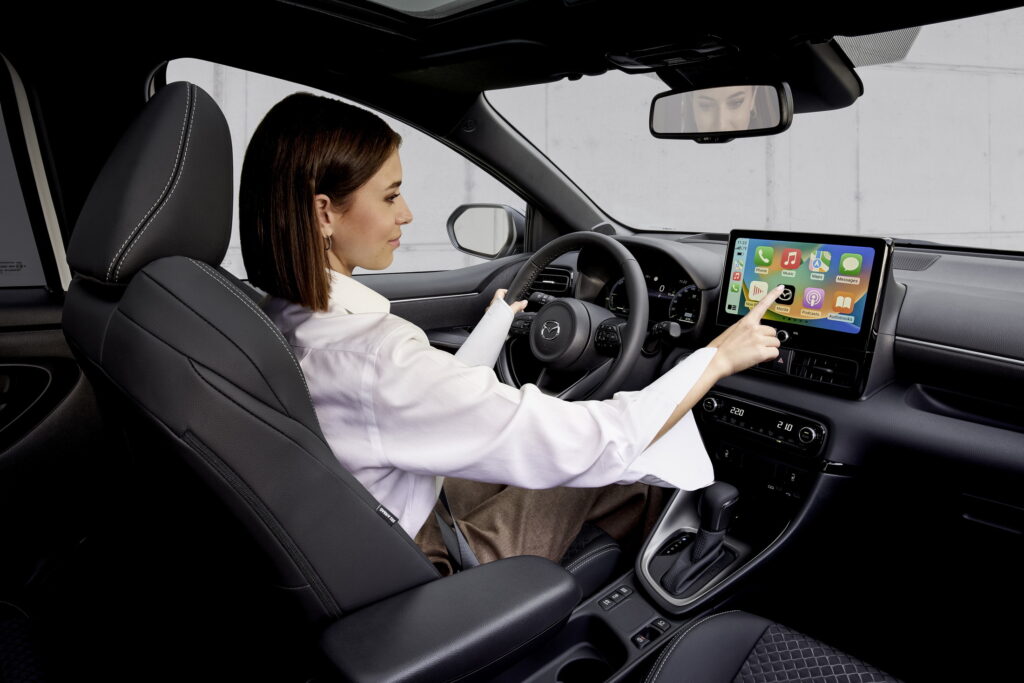
Interestingly, Mazda didn’t get access to the more potent version of Toyota’s self-charging hybrid system that makes 129 hp (96 kW / 130 PS) and 141 Nm (104 lb-ft) of torque in the facelifted Yaris. This means that the electrified powertrain produces the same 114 hp (85 kW / 116 PS) and 169 Nm (125 lb-ft) of torque from a 1.5-liter three-cylinder engine and a single electric motor.
Power is transmitted to the front axle through a CVT gearbox, while a lithium-ion battery allows the model to often drive in EV mode in urban environments. As a result, fuel consumption in the WLTP combined cycle is still rated at 3.8-4.0 lt/100km (74.3-70.6 mpg UK / 61.9-58.8 mpg US) with CO2 emissions being limited to 87-97 g/km depending on the wheel size. As for performance, the supermini accelerates from 0-100 km/h (0-97 mph) in the same 9.7 seconds and has a top speed of 175 km/h (109 mph).
Mazda didn’t announce pricing for the facelifted model but we wouldn’t be surprised if it gets more expensive compared to its predecessor following the rest of the segment in this upward spiral. The regular Mazda2 which was facelifted earlier this year remains available in Europe, as a significantly cheaper alternative to the Mazda2 Hybrid. By offering two different models in the supermini segment, Mazda is lowering its fleet emission average in the Old Continent, without the need to develop an electrified offering by itself. By 2030, the company plans on offering a range of EVs covering “the most important segments of the European market”.




